
Physical activity is a very important component of energy balance that describes how weight, diet, and exercise influence human health. There is clear evidence that exercise is associated with lowered risk of some cancers of the breast and colon. Several researches have also shown the connections between exercise and lowered risk of lung cancer, endometrial cancer and prostate cancers. The studies carried out by National Cancer Institute-funded explored the role of exercise in quality of life, cancer risk, cancer survivorship and needs of populations at high risk. In this article on VKool site in the line of Fitness, we are going to show you the connection between exercise and cancer prevention. Check out and learn how to prevent cancer for good!
Exercise And Cancer Prevention – Be Cancer Free With Exercise
1. How Is Exercise Associated With Health?
Exercise and physical activity in general are bodily movements produced by muscles; movement results in the expenditure of energy. Exercise and physical activity are critical parts of energy balance that influence your health, including the risk of conditions, diseases like cancer.
Researchers and scientists have established that exercise can help improve human’s health by:
- Controlling weight
- Reducing the risk of diabetes and high blood pressure
- Maintaining healthy muscles, joints and bones
- Improvingpsychological well-being
- Lowering the risk of death from cardiovascular diseases
- Lowering the high risk of premature death
Besides these health benefits, scientists and researchers are studying that exercise can also help prevent and lower the risk of cancer. Strong evidence suggests that exercise is related to a lowered risk of some cancers of the breast of colon. Several recent studies have shown the links between exercise and a lowered risk of lung cancer, prostate cancer and endometrial cancer.
2. Benefits Of Exercise For Cancer Patients
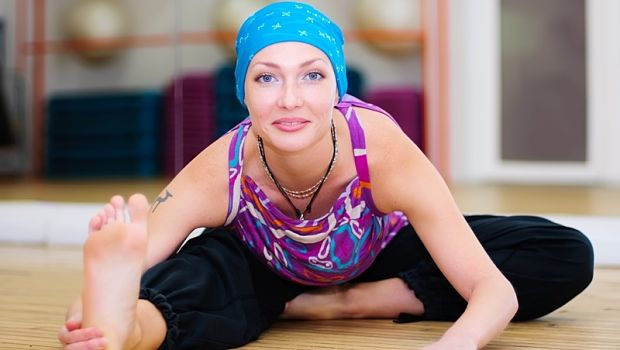 When it comes to connections between exercise and cancer prevention, let’s take a closer look at benefits of exercise for cancer risk. The benefits of physical activity for us are well-publicized. However, what if you suffer from cancer? Physical activity has a lot of the same good effects for cancer survivors when it does for adults. These benefits include a boosted level of fitness, leaner body mass, less weight gain and greater muscle strength. In other words, physical activity and exercise for cancer sufferers can make you stronger, fitter and thinner like anyone who exercises regularly. Exercise can also:
When it comes to connections between exercise and cancer prevention, let’s take a closer look at benefits of exercise for cancer risk. The benefits of physical activity for us are well-publicized. However, what if you suffer from cancer? Physical activity has a lot of the same good effects for cancer survivors when it does for adults. These benefits include a boosted level of fitness, leaner body mass, less weight gain and greater muscle strength. In other words, physical activity and exercise for cancer sufferers can make you stronger, fitter and thinner like anyone who exercises regularly. Exercise can also:
- Boost your confidence
- Improve your mood
- Reduce fatigue
- A lot more
3. Types Of Exercise For Cancer Patients
 The condition of each one is different. Before beginning an exercise program (from moderate to vigorous), see your doctor first!
The condition of each one is different. Before beginning an exercise program (from moderate to vigorous), see your doctor first!
The types of exercise below can help healthy people, cancer patients and any everyone else get back in shape:
- Flexibility exercises
- Aerobic exercise
- Resistance training
4. Physical Activity For Cancer Patients: How Much & How Hard
 It is recommended that people should exercise at least 30 – 60 minutes 5 days weekly. This amount of physical exercise is proven to lower the risk of diabetes, cardiovascular and cancer. Experts suggest that it is very beneficial for patients of different cancers. You can increase different types of physical activity without leaving your house or joining a gym. Just having more activities into your exercise routine can help you get started with ease. Here are several suggestions:
It is recommended that people should exercise at least 30 – 60 minutes 5 days weekly. This amount of physical exercise is proven to lower the risk of diabetes, cardiovascular and cancer. Experts suggest that it is very beneficial for patients of different cancers. You can increase different types of physical activity without leaving your house or joining a gym. Just having more activities into your exercise routine can help you get started with ease. Here are several suggestions:
- Instead of riding elevators, taking the stairs
- Buying a pedometer and increasing the number of steps regularly
- Taking frequent breaks through the day to stretch, stand and take short walks
- Checking the pantry
- Lift detergent bottles, cans or anything heavy enough to build your muscles. Do 3 sets of 10 lifts until you feel the muscles tiring.
Fatigue can sometimes be severe so that you should take some rest temporarily, and don’t overdo. Rest for a while, and start again slowly. As a result, your energy level can increase in the long term. Read on: Best hamstring stretches that are good for runners
5. Connection Between Exercise &Colon Cancer
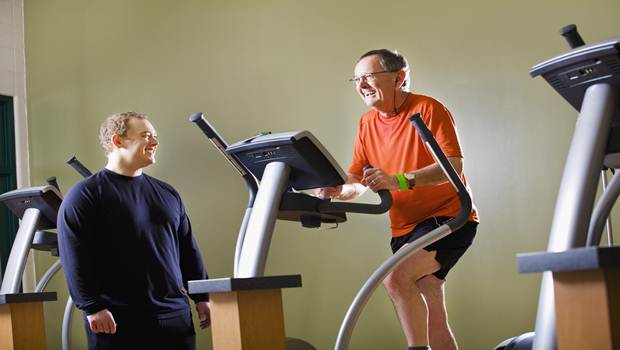 Colorectal cancer is of the most cancers that is extensively studied in the connection with physical activity. There were over 50 studies examining this fact. Many studies and research in the US and many other countries have found that those who increased their physical activity and exercise, either in duration, frequency and intensity, could lower their risk of colon cancer up to 30 – 40% relative to people who were sedentary regardless of BMI, with the better risk reduction found among people who were most active. The magnitude of good effects is the best with high-intensity exercises, although the optimal exercise levels and duration are still hard to determine because of differences among studies. It is indicated that a 30-60 minute exercise routine daily is necessary to protect you from colon cancer. It is still not clear whether exercise and physical activity can offer protective effects for adenomas, rectal cancer, or polyprecurrence.
Colorectal cancer is of the most cancers that is extensively studied in the connection with physical activity. There were over 50 studies examining this fact. Many studies and research in the US and many other countries have found that those who increased their physical activity and exercise, either in duration, frequency and intensity, could lower their risk of colon cancer up to 30 – 40% relative to people who were sedentary regardless of BMI, with the better risk reduction found among people who were most active. The magnitude of good effects is the best with high-intensity exercises, although the optimal exercise levels and duration are still hard to determine because of differences among studies. It is indicated that a 30-60 minute exercise routine daily is necessary to protect you from colon cancer. It is still not clear whether exercise and physical activity can offer protective effects for adenomas, rectal cancer, or polyprecurrence.
Read on: Workouts to increase speed, quickness and stamina Exercise most likely has influences on the formation of colon cancer in various ways. It can protect against tumor development and colon cancer through the role of physical activity in energy balance, insulin regulation, hormone metabolism and by reducing the time that the colon’s exposed to some potential carcinogens. Exercise has also been proven to alter a wide range of immune factors, inflammatory and some that may affect colon cancer risk.
6. Connection Between Exercise &Breast Cancer
 When it comes to the connection between exercise and cancer prevention, there were more than 60 studies in Asia, Europe, Australia, North America conducted about the relationship between exercise and breast cancer. Most studies show that active women had a low risk of breast cancer development than inactive ones; nevertheless, the amount of the cancer reduction had through physical activities widely between 20 – 80 percent. Although scientific evidence suggests exercise can help reduce breast cancer in both postmenopausal and premenopausal women, high levels of exercise during adolescence can be particular protective. Moreover, though a lifetime of exercise is believed to be of good benefits, women with regular exercise after menopause can also have a lower risk in comparison with inactive ones. Besides, many studies suggest that effects of exercise may be different depending on levels of the BMI, with good benefits achieved in women in the weight range (a BMI under 25 kg/m2) in several studies. Recent evidence indicates a high risk of breast cancer because the duration and frequency of exercise and physical activity increase. Many studies show that 30 – 60 minutes of exercise per day is related to a reduction of breast cancer risk. Scientists and researcher have proposed a few biological mechanisms that explain the connection between exercise and cancer, including breast cancer. The findings showned that physical activity can prevent tumor by reducing hormone levels, especially in premenopausal women; reducing levels of insulin, boosting the response of the immune system; and helping with weight control to avoid excess body fat as well as a high body.
When it comes to the connection between exercise and cancer prevention, there were more than 60 studies in Asia, Europe, Australia, North America conducted about the relationship between exercise and breast cancer. Most studies show that active women had a low risk of breast cancer development than inactive ones; nevertheless, the amount of the cancer reduction had through physical activities widely between 20 – 80 percent. Although scientific evidence suggests exercise can help reduce breast cancer in both postmenopausal and premenopausal women, high levels of exercise during adolescence can be particular protective. Moreover, though a lifetime of exercise is believed to be of good benefits, women with regular exercise after menopause can also have a lower risk in comparison with inactive ones. Besides, many studies suggest that effects of exercise may be different depending on levels of the BMI, with good benefits achieved in women in the weight range (a BMI under 25 kg/m2) in several studies. Recent evidence indicates a high risk of breast cancer because the duration and frequency of exercise and physical activity increase. Many studies show that 30 – 60 minutes of exercise per day is related to a reduction of breast cancer risk. Scientists and researcher have proposed a few biological mechanisms that explain the connection between exercise and cancer, including breast cancer. The findings showned that physical activity can prevent tumor by reducing hormone levels, especially in premenopausal women; reducing levels of insulin, boosting the response of the immune system; and helping with weight control to avoid excess body fat as well as a high body.
7. Connection Between Exercise &Endometrial Cancer
 Next to the connection between and exercise and cancer prevention – endometrial cancer, there were about 20 studies on it. The findings show an inverse connection between endometrial cancer and physical activity. Some of these 20 studies reveal that women with exercise had a 20 – 40% decreased risk of this cancer, with the best reduction of the risk among women with high levels of moderate exercise and risk didn’t appear to vary by age.
Next to the connection between and exercise and cancer prevention – endometrial cancer, there were about 20 studies on it. The findings show an inverse connection between endometrial cancer and physical activity. Some of these 20 studies reveal that women with exercise had a 20 – 40% decreased risk of this cancer, with the best reduction of the risk among women with high levels of moderate exercise and risk didn’t appear to vary by age.
8. Connection Between Exercise &Lung Cancer
 There were at least 21 research and studies have indicated the effects of exercise on lung cancer. Basically, these studies showed an inverse connection between the risk lung cancer and physical activity, with the physically active people experiencing approximately a 20% reduction of the risk. Many scientific studies also found strong evidence that high levels of exercise can protect against the risk of lung cancer, yet was unable to control for impacts of respiratory or smoking diseases in estimating a magnitude of potential good effects. The connection between lung cancer risk and physical activity seems clear for men than it is for women.
There were at least 21 research and studies have indicated the effects of exercise on lung cancer. Basically, these studies showed an inverse connection between the risk lung cancer and physical activity, with the physically active people experiencing approximately a 20% reduction of the risk. Many scientific studies also found strong evidence that high levels of exercise can protect against the risk of lung cancer, yet was unable to control for impacts of respiratory or smoking diseases in estimating a magnitude of potential good effects. The connection between lung cancer risk and physical activity seems clear for men than it is for women.
9. Connection Between Exercise &Prostate Cancer
 Scientific findings were less consistent about effects of exercises on prostate cancer, with about 36 studies in Europe, Asia and North America. Overall, epidemiologic studies did not indicate there were an inverse connection between prostate cancer and physical activity. Although it’s possible men with physically active can experience the reduction of prostate cancer, biological mechanisms explaining this connection is unknown, yet may be associated to some changes in hormones, insulin growth, immunity, antioxidant defense mechanisms and energy balance. A recent research has shown that regular exercise could slow the development of prostate cancer and its risk in men of 65 or older. Bottom line: There are still a lot of things related to the connection between exercise and cancer prevention while the rate of cancer has been rising globally. Don’t forget to search for more new research and studies about cancer daily. For any feedback about this article, drop your comment at the end of the post.
Scientific findings were less consistent about effects of exercises on prostate cancer, with about 36 studies in Europe, Asia and North America. Overall, epidemiologic studies did not indicate there were an inverse connection between prostate cancer and physical activity. Although it’s possible men with physically active can experience the reduction of prostate cancer, biological mechanisms explaining this connection is unknown, yet may be associated to some changes in hormones, insulin growth, immunity, antioxidant defense mechanisms and energy balance. A recent research has shown that regular exercise could slow the development of prostate cancer and its risk in men of 65 or older. Bottom line: There are still a lot of things related to the connection between exercise and cancer prevention while the rate of cancer has been rising globally. Don’t forget to search for more new research and studies about cancer daily. For any feedback about this article, drop your comment at the end of the post.
Want More Content Like This In Your Inbox?
- 22 Natural Summer Skin Care Tips For Oily Skin And Dry Skin
- 8 Natural Home Remedies For Foot Odor You Should Know
- 10 Tips On How To Treat Epilepsy Naturally
- Rapid Fire Abs PDF Review – Will Arnel’s Plan Work Well?
- Top eye exercises for astigmatism cure: 6 best choices
- Top 30 Positive & Side Effects Of Sunlight On Human Body
- 18 Benefits Of Baobab Fruits, Powder, & Oil For Entire Health
- 11 Best ways on how to use turmeric for arthritis treatment










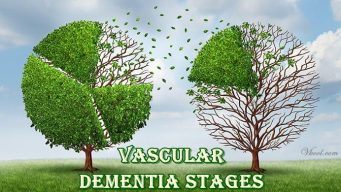

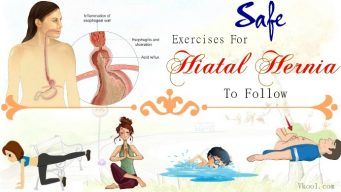






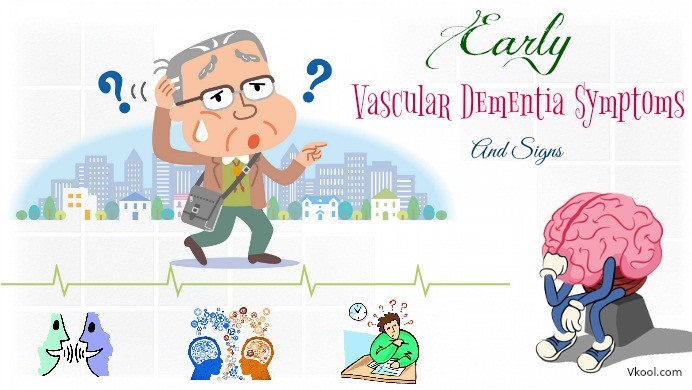

 The Lean Body Lifestyle Program Review – Is The Program Useful?
The Lean Body Lifestyle Program Review – Is The Program Useful?  27 Easy healthy pancake recipes
27 Easy healthy pancake recipes  30 best easy Australian food recipes – the untapped list!
30 best easy Australian food recipes – the untapped list!  Brilliant Yoga Book Review – Does Sarah Sanders’ Program Work?
Brilliant Yoga Book Review – Does Sarah Sanders’ Program Work?  Lean Hybrid Muscle Review – Is Elliott’s Program Useful?
Lean Hybrid Muscle Review – Is Elliott’s Program Useful?  Flaxseed Meal Recipes: Muffins, Pancakes, Cookies…
Flaxseed Meal Recipes: Muffins, Pancakes, Cookies…  Top 12 Easy Fondue Recipes For Kids
Top 12 Easy Fondue Recipes For Kids  14 Easy Home Remedies For Lung Congestion Are Recommended
14 Easy Home Remedies For Lung Congestion Are Recommended  4 Natural Ways On How To Use Toothpaste For Acne Treatment
4 Natural Ways On How To Use Toothpaste For Acne Treatment  Top 10 Benefits Of Cornmeal For Health, Hair, And Skin
Top 10 Benefits Of Cornmeal For Health, Hair, And Skin